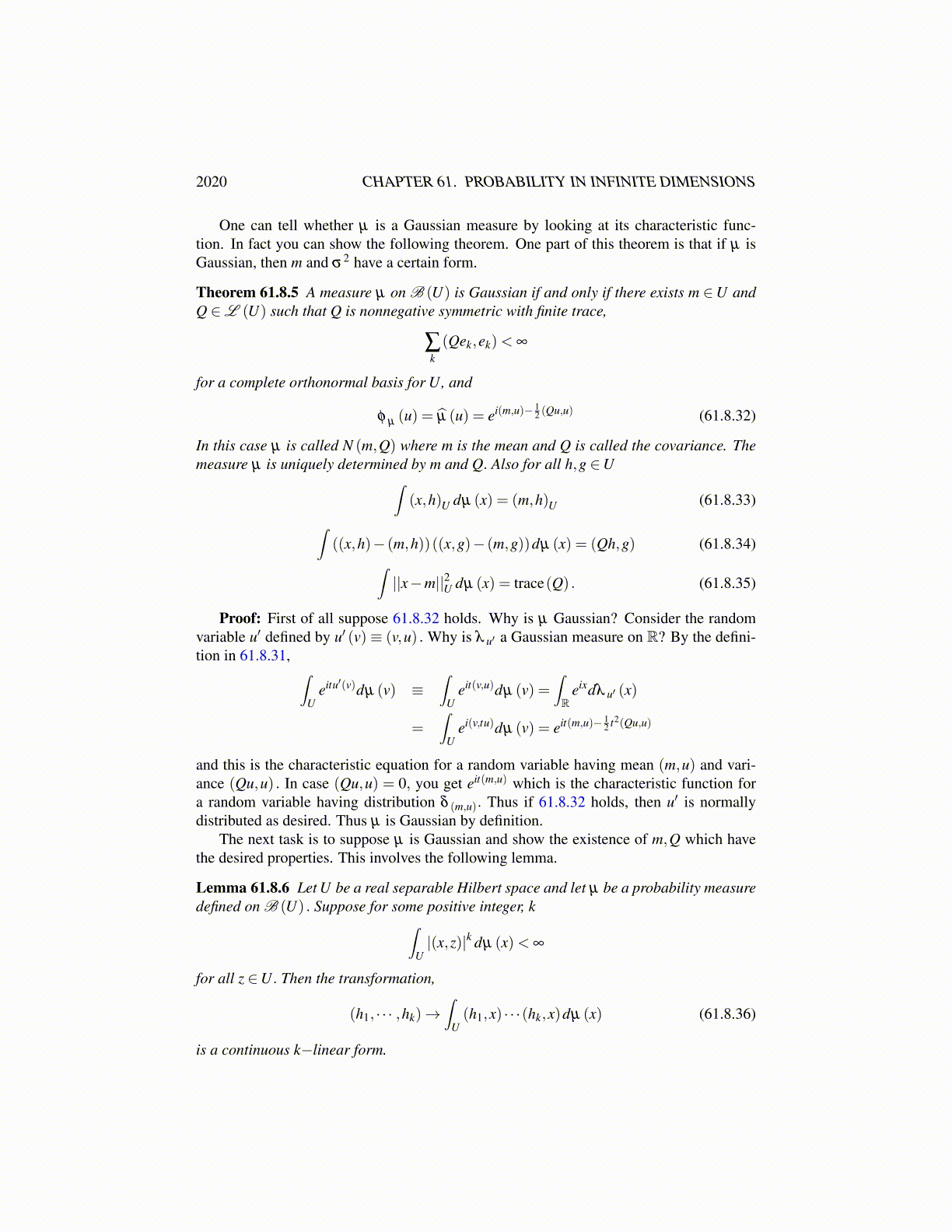
2020 CHAPTER 61. PROBABILITY IN INFINITE DIMENSIONS
Now first pick r large enough that ln(α0 (r)) < −2 and then let λ be small enough that25λ r2 < 1 or some such scheme and you obtain ln(α0 (r))+λ25r2 < −1. Then for thischoice of r and λ , or for any other choice which makes ln(α0 (r))+λ25r2 <−1,∫
Eeλ ||x||2dµ ≤ exp
(λ r2)+ ∞
∑n=0
e−2n
≤ exp(λ r2)+ ∞
∑n=0
e−2n
= exp(λ r2)+ e2
e2−1.
This proves the theorem.
61.8 Gaussian Measures For A Separable Hilbert SpaceFirst recall the Kolmogorov extension theorem, Theorem 59.2.3 on Page 1862 which isstated here for convenience. In this theorem, I is an ordered index set, possibly infinite,even uncountable.
Theorem 61.8.1 (Kolmogorov extension theorem) For each finite set
J = (t1, · · · , tn)⊆ I,
suppose there exists a Borel probability measure, νJ = ν t1···tn defined on the Borel sets of∏t∈J Mt where Mt = Rnt such that if
(t1, · · · , tn)⊆ (s1, · · · ,sp) ,
thenν t1···tn (Ft1 ×·· ·×Ftn) = νs1···sp
(Gs1 ×·· ·×Gsp
)(61.8.29)
where if si = t j, then Gsi = Ft j and if si is not equal to any of the indices, tk, then Gsi = Msi .Then there exists a probability space, (Ω,P,F ) and measurable functions, Xt : Ω→Mt foreach t ∈ I such that for each (t1 · · · tn)⊆ I,
ν t1···tn (Ft1 ×·· ·×Ftn) = P([Xt1 ∈ Ft1 ]∩·· ·∩ [Xtn ∈ Ftn ]) . (61.8.30)
Lemma 61.8.2 There exists a sequence, {ξ k}∞
k=1 of random variables such that
L (ξ k) = N (0,1)
and {ξ k}∞
k=1 is independent.
Proof: Let i1 < i2 · · ·< in be positive integers and define
µ i1···in (F1×·· ·×Fn)≡1(√2π)n
∫F1×···×Fn
e−|x|2/2dx.